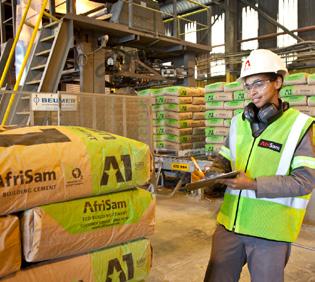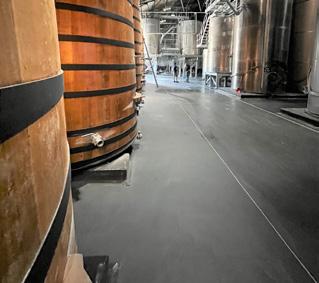
2 minute read
The evolution of green construction
from IMIESA June 2023
by 3S Media
The sustainability drive in the construction sector is gathering momentum, with AfriSam’s product range evolving to meet current and future trends in areas like green building.

Advertisement
According to Hannes Meyer, cementitious executive at AfriSam, the company has made continuous progress in fields such as energy efficiency, cement extenders, water conservation and biodiversity. This allows customers to procure products in the knowledge that the environmental and carbon impact is minimised.
“We give our customers the opportunity to support a more sustainable future for the sector by choosing construction materials that embody this commitment,” Meyer explains. “We do not just set theoretical targets for environmental performance; we are practical about what we can achieve, because we have been innovating on this front for so long.”
This is in clear contrast to a significant level of ‘greenwashing’ in this sector, where many companies advertise a sustainable approach but without credible evidence of how their targets are to be achieved. Since 1990, AfriSam has been able to reduce the volume of carbon dioxide emissions per tonne of cementitious material by 33%.
Sustainability journey
In a carbon-intensive industry like cement manufacturing, it is difficult to reduce the carbon impact without a depth of expertise and constant investment in innovation, says Marieta Buckle, process engineer, AfriSam. It is also important to consider the cost implications of any changes, given South Africa’s need for a just transition to a sustainable future.
“In our position as a developing country, our future will demand the construction of millions of houses – structures that require considerable quantities of cement,” says Buckle. “The way we pursue our just transition must take into account the affordability of these homes for the vast majority of citizens.”
AfriSam has therefore been cautious in how it sets and publicises its sustainability targets, while all along continuing to prioritise research and development into how to achieve lower-carbon products. Having considered a wide variety of options available, it has implemented strategies that have the least cost impact on customers and the market.
Over time, the concrete flooring at DGB’s Franschhoek Cellar production facility had succumbed to wear and tear, requiring an intensive overhaul. The contract was awarded to Botwei Projects, with the client brief requiring the execution of a high-quality, granite-grey finish.
On initial inspection, it was found that the existing floor was curling, delaminating and riddled with bad joint specifications. This led to the decision to strip 1 700 m2 of existing cementitious flooring and start from scratch. Additionally, the client required a further 400 m2 of new flooring to be installed. On all phases, Sika’s specialist solutions were specified to ensure the best result.
Botwei Projects began with the preparation of the existing floors using Sikadur-52 ZA to seal all existing cracks by means of gravity feed. During this process, a bead of sealant is used to create a reservoir around the cracks, which are filled with the low-viscosity resin, creating a robust permanent seal.
In turn, SikaGrout-212 was used to fill all voids and defects. The latter is a high-strength cementitious grout with shrinkage compensation properties and is the go-to product on repair projects where high-strength concrete is required. Additional repairs were undertaken using SikaQuick-2500, which, true to its name, promotes very rapid hardening, enabling early strength gain.
Final touches
In the next stage, Sikafloor-20 PurCem was trowel applied at 6 mm. A high-strength polyurethane cement hybrid screed, this product is odourless, non-tainting when used in food processing areas, and thermal shock-resistant when used in Industrial freezers.
Finally, Sika Primer-3N and Sikaflex PRO-3 polyurethane joint sealant were used to prime and seal the joints.
All in all, the project not only met and exceeded the customer’s brief, but it also provided an elegant floor to match the world-class winery in which it resides.
Sika’s Sikafloor-20 PurCem polyurethane hybrid screed superseded the client’s expectations with its robust, yet elegant and durable finish









